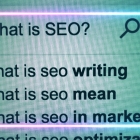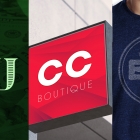Emotionally Intelligent Web Design: Giving Your Visitors A Big Hug
Have you ever sat down, looked at a website, and said to yourself, “I LOVE THIS.”
If so, did you then ask yourself what makes you like it so much? Is it the colors used in the design? Is it the layout? Is it the graphics and images? Is it the way the content is organized or is it something else? Is there something that speaks to a deeper part of you that you can’t put your finger on, like—soul?
GLAD WORKS asked ourselves this question recently after reading a great article in Smashing Magazine. We discovered that our favorite sites really do feel organic. When we visit them we feel like they have some emotional intelligence, as if we are speaking directly to the people behind that website while we interact with it.
This makes sense because after all, websites are made by humans for humans: why should they be boring and robotic? Yet so many sites seem uninspired at best, and unusable at worst.
When emotionally intelligent websites are designed, it’s done so with the user experience foremost in mind. Thoughtful design and feedback mechanisms are built right in, so it’s no accident that we feel a human connection. That human/emotional connection is critical to repeat visits.
It’s so simple it makes perfect sense, doesn’t it GLAD WORKS friends.
So today we’re going to talk a little bit about some of the major points to address in emotionally intelligent web design.
This is going to be more fun than a barrel of monkeys!
Emotionally intelligent web design is all about the details: it’s the colors, design, messaging, copy and responsiveness, all coming together to make the experience rewarding and personal.
We’ve already discussed the importance of making the right color choices in your design projects, so suffice it to say that the colors you choose for your website should be supportive of your overall mission to make visitors feel comfortable on your site. The colors should also complement the intent and content of the site too (you don’t want clown colors on a casket company product page). That said; let’s move right on to design and responsiveness because those are the base layers we use to build all the fun stuff on. It’s the cake we’re gonna frost, if you will.
Design
We love things that acknowledge and respect the user’s experience. Making sure a site is well designed and as intuitive and organized as possible is the first step in making folks feel at home when they visit you. Resist the urge to put links everywhere. Fight the clutter, keep it lean. Every page on the site should take less than four clicks to get to (of course a monster site might take more, but you get the point).
After that, taking customers through a thorough walk through of a sign up experience or product pages is a great way to reinforce your user-friendly design. No matter how intuitive it might seem, someone else might not really understand how your site works, so keeping that in mind is helpful. Let them “drive” on the tour, and just point out and explain features as they naturally come up.
That’s the first step toward emotionally intelligent web design. Next!
Responsiveness
Things like the buttons on a site can have a little more pizzazz by saying things like “ok, got it!” or “this makes sense!” instead of saying “next” or “continue.” Maybe once a step is completed or a sign up process is done, the button can change from an arrow to a thumbs up, a green checkmark, a heart, or a happy face. These are little treats for a user to discover as they go thorough a site, and they make it fun. There are many, many ways to throw some fun or interesting things into a design. Buttons are just an easy example.
You can even have some Easter eggs hidden around. How fun is that?
Messaging and copy
Humor is a huge way to connect to people. Now, we don’t mean that things need to be outright hilarious all the time, but a little smile from someone goes a long way to breaking the ice and creating a bond. Humor is an acknowledgement of commonality.
Knowing your users and the context they’re in will help determine if they’re going to appreciate humor or not. Some products or businesses are just funny to begin with—but some aren’t! Believe it or not, some people have an underdeveloped sense of humor, and will not find your quips funny.
Just like in life, it’s a little risky to show some emotion and humanity in web design. Some people (we call them “cranky pants people”) won’t get it at all. They prefer their websites sterile and clinical. Some people will even go so far as to hate it, but that’s okay. You can’t please all the people all the time, and getting something out of them is often better than them not caring one way or the other. Sometimes a little risk can pay off in a big reward. Remember, the opposite of love is indifference, GLAD WORKS friends!
When all is said and done, you want an interesting (has information you can use), engaging (involves the reader/viewer), and rewarding (small efforts have big results) website. Always bringing your focus back to the human at the other end of the internet will help achieve these goals, via deft use of color, design, messaging, copy and responsiveness.

 An agency-eye view of Marketing, Advertising, Branding, Design & Media.
An agency-eye view of Marketing, Advertising, Branding, Design & Media.




